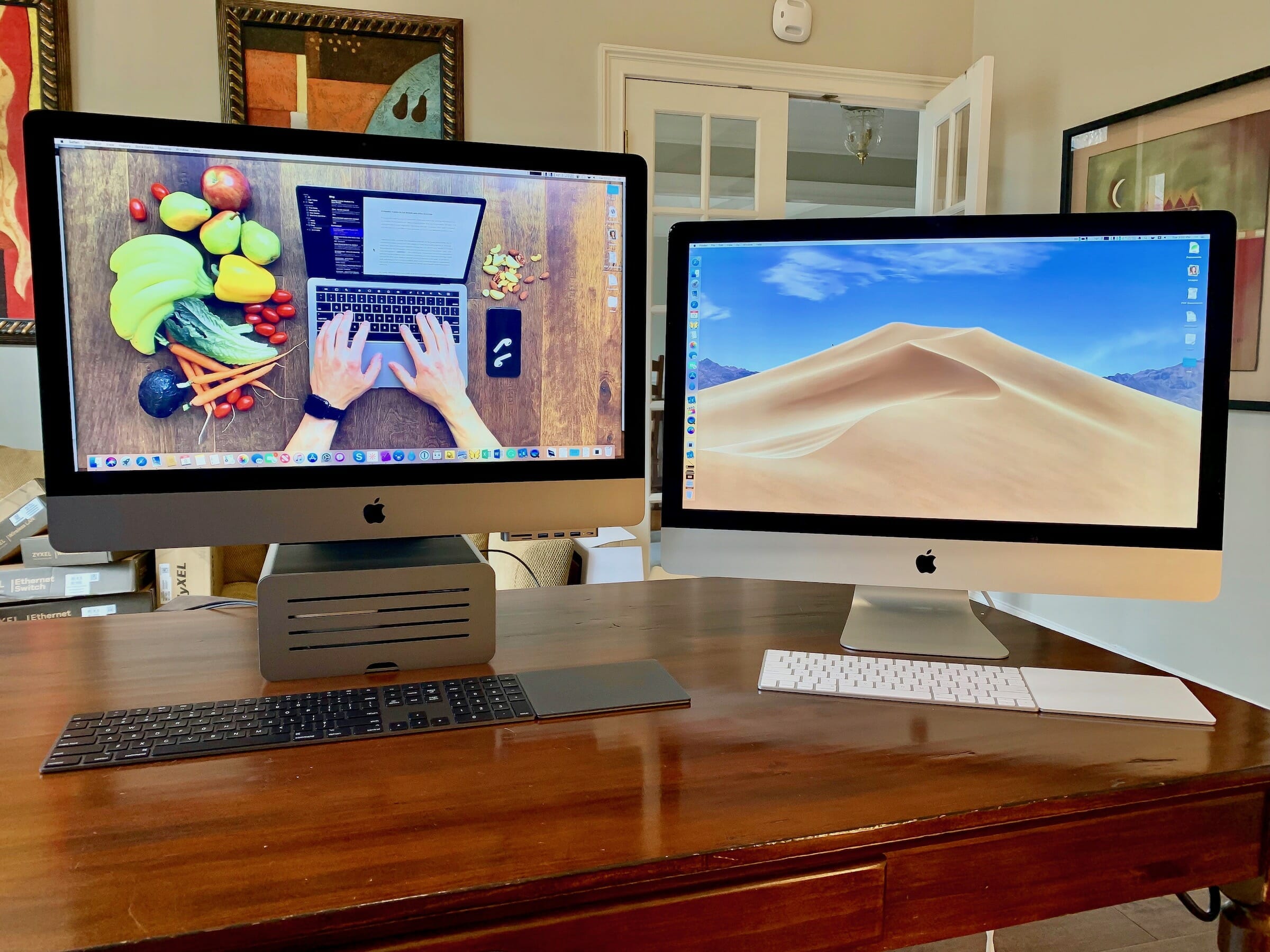

- #Imac pro vs imac 27 2019 upgrade
- #Imac pro vs imac 27 2019 professional
- #Imac pro vs imac 27 2019 mac
Measuring 25.6 x 20.3 x 8 inches and weighing 20.8 pounds, the iMac isn't any larger than its 27-inch competitors, like the Microsoft Surface Studio 2 (25.1 x 17.3 x 8.7 inches, 21 pounds) and the Dell XPS 27 (24.6 x 17 x 3.16 inches, 38.2 pounds). There is, at least, a circular cutout for feeding wires through, and the hinge allows you to tilt the display up and down. While the stand feels sturdy and looks great, it isn't very practical because you still can't adjust the display height. Just below that is a power connector that sits in line with a row of ports on the back-right corner.Īpple still hasn't made any major changes to the iMac's design since slimming it down in 2012.Ī slim, intricately curved stand keeps the 5-millimeter frame hovering a few inches off the desk. Another shiny black Apple logo adorns the rear, above a vent and a small access panel. Underneath the display is a silver metal chin with a centered black Apple logo, while the back has subtle convex curves that give it an elegant pillowy shape. We'll keep crossing our fingers for a redesign that does away with the bezels so there'll be nothing to distract us from the iMac's mesmerizing 5K display. The iMac's 27-inch display is surrounded by thick black bezels that look massive when compared with Apple's newer products, like the iPhone XS and the iPad Pro. And with the money you save by getting the 1TB/32GB iMac, you can buy yourself a pretty nice second monitor.Sporting Apple's signature silver aluminum finish, the all-in-one has a simple yet sophisticated design, although I was hoping the iMac would adopt the iMac Pro's snazzy space-gray color variant. The iMac's Vega 48 isn't quite as powerful as the Vega 56 in the iMac Pro, but if you've got GPU-bound applications, you probably want the Vega 64, anyway, because it has more memory (16GB versus 8GB).

#Imac pro vs imac 27 2019 mac
And if you're worried about future upgradability, you might want to wait and see if Apple manages to get its promised modular Mac Pro out the door this year, anyway.įor the same money as the iMac Pro base configuration, you can get an iMac with the Intel Core i9-9900K processor and AMD Radeon Pro Vega 48 GPU plus: You should probably be spending more on a higher-power configuration. It supports up to 256GB RAM, including error-correcting ECC memory, which is important for high-precision calculations.īut I'd argue that if you need a lot of high-resolution monitors or a big network pipe, or run applications that need ECC memory (and a lot of it), you shouldn't be buying the base-model iMac Pro.It has a higher-bandwidth Ethernet connection, 10Gb versus the iMac's 1Gb.

It can support up to four additional 4K displays rather than the iMac's two, or two additional 5K monitors rather than just one, thanks to the two extra USB-C/Thunderbolt ports.You might think that the iMac Pro has some other important differences from the iMac, and you'd be right: It's also designed to handle faster (i.e., hotter-running) components, with extra ventilation at the bottom. The iMac Pro has two more USB-C ports than a standard iMac, a 10Gb Ethernet connection and an SD card slot that can be used with UHS-II cards.

#Imac pro vs imac 27 2019 upgrade
Since the CPU in an all-in-one isn't upgradable, that's what you're stuck with for the life of the system - you can always add an external GPU to upgrade the graphics processing with either system, for example. (It used to mean more processor cores, but there are now consumer CPUs with up to 18 cores from Intel and AMD CPUs with up to 32 cores thanks to the core wars.)
#Imac pro vs imac 27 2019 professional
That's because a workstation CPU determines how professional applications work with your system, and in some cases, what features they'll "unlock" for you, as well as offering more sophisticated security. Because the iMac is now powerful enough for what most people who are gazing longingly at that bottom Pro model need to do. There are other considerations, but the CPU is ultimately what the decision comes down to. Do you need a workstation CPU? That's the main question you need to answer before shelling out $5,000 (£4,899, AU$7,299) for the entry-level configuration of the Apple iMac Pro rather than a top-level configuration of the new iMac.


 0 kommentar(er)
0 kommentar(er)
